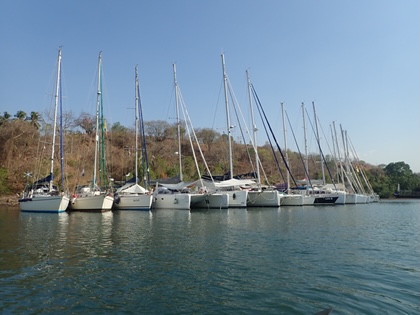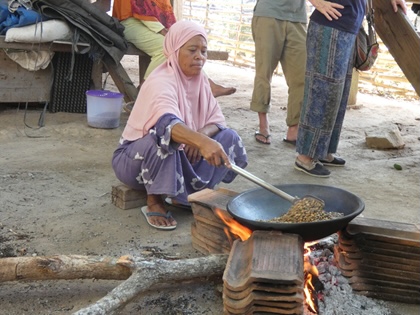Badas 08:27.9S, 117:22.2E

We departed Bima in the early hours navigating slowly down the harbour as the fishing boats are not always easy to see, or to work out what they are doing. Clear of the harbour at first light we headed west along the top of Sumbawa, on the 70 miles to Miro and our overnight anchorage. We managed to sail a bit but with very fickle winds most of the day was spent motoring to drop anchor in Miro early evening. There were a number of rally boats here all heading down into Saleh bay for the experience of swimming with whale sharks. They departed early morning we waited and had a great sail around the north of Pulau Moyo to the harbour at Badas. Eventually there were 24 yachts moored up in this small harbour, med-moored (anchors down and ropes to trees on the shore) and rafted side by side. This was probably the dirtiest harbour we have been in and the burning of rubbish ashore at night made it unpleasant at times. As always the locals were friendly and welcoming.
Rally boats rafted at Badas
The old Sultans Palace at Badas, built of teak and held together by wedged joints and wooden nails.
Traditional dance at the vocational school
Young boys learning to play the traditional instruments they have made
Sarah tries her hand at buffalo racing and manages to stay on for the complete course,
And Sarah tries her hand at weaving, the pattern is produced by pre-dying the thread.
Roasting the coffee beans,
And grinding.
Hand forging of knives from scrap steel And the finished knives with decorative handles and sheaths. Apart from the first evening, when we taken to a restaurant to buy a meal most evenings were spent on board the boats with bring and share type meals or it was possible to walk to a nearby restaurant. |









